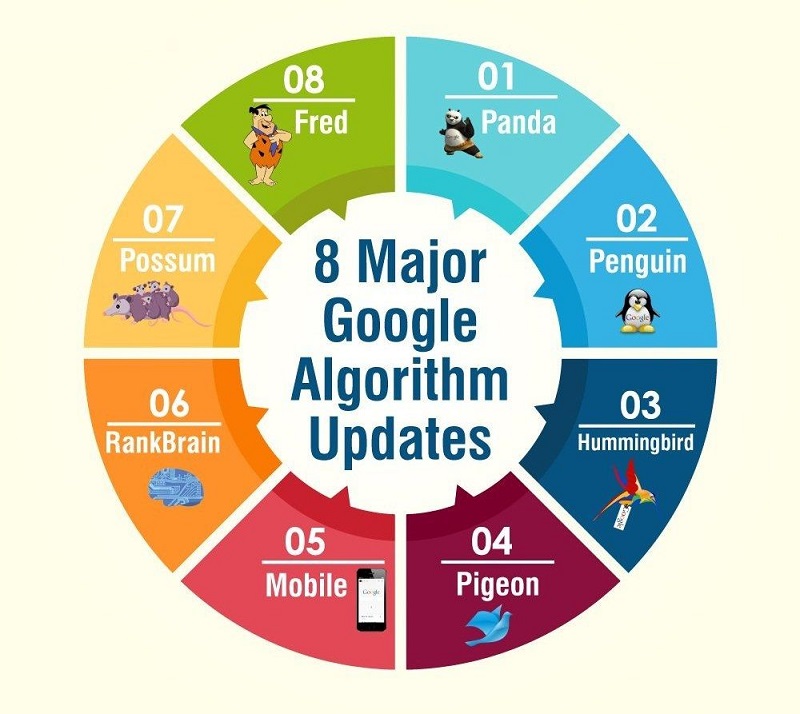Google’s Algorithms is a pioneer in the development of internet search technology since its establishment in 1998. The firm’s algorithms have been constantly improved to better meet user demands, and to move with the ever-changing world of the web. In this blog, we take a deep dive into the major turning points in the development of Google’s algorithms and how these changes have influenced the way we search for information on the internet.
The Early Days Google’s Algorithms: PageRank
When Google first appeared on the scene, by virtue of its algorithm, called PageRank, Google revolutionized the world of search rankings in Google’s Algorithms, by attaching importance to web pages, in testimony of the quantity and quality of the incoming links lead through to them. This type of approach was a step towards distance from search engines that have used keyword density. PageRank helped Google deliver more relevant results and quickly established the company as a leader in search technology.

The Evolution of Google’s Algorithms in 2025
2003: The Florida Update
The Florida Update (November 2003) was one of Google’s first major algorithmic (Google’s Algorithms) updates. It targeted websites that used manipulative SEO tactics, such as keyword stuffing and link farming. This update marked a shift towards rewarding high-quality content and penalizing spammy practices.
2011: The Panda Update
In February 2011, Google launched the Panda Update, designed to lower the rankings of low-quality, thin content and elevate sites with valuable, in-depth content. This update significantly impacted content farms and sites with high ad-to-content ratios, pushing webmasters to focus on creating better user experiences.
2012: The Penguin Update
The Penguin Update, released in April 2012, aimed to decrease the rankings of sites that violated Google’s Webmaster Guidelines through black-hat SEO techniques, such as link schemes and keyword stuffing. This update also underscored the necessity for ethical SEO strategies and the importance of high-quality backlinks.
2013: The Hummingbird Update
Google’s Hummingbird Update, launched in September 2013, represented a significant overhaul of the search engine’s core algorithm. Hummingbird enhanced the capability of Googles to interpret the meaning of a search query, thereby leading to a more precise, contextual and relevant search result. This update laid the foundation for Google’s focus on semantic search and natural language processing for better improvement of Google’s Algorithms.
2015: The Mobile-Friendly Update (Mobilegeddon)
Due to the increased Internet use via mobile phones, Google launched the Mobile-Friendly Update in April 2015. This update prioritized mobile-friendly websites in search results, encouraging webmasters to adopt responsive design and improve the mobile user experience. It was a robust indicator of Google’s willingness to respond to shifts in how it’s users are acting.
2015: The RankBrain Update
RankBrain, a Google-developed part released in October 2015, was a machine learning-based architecture. It made it possible for Google to more accurately process and understand the complex search queries that it had not seen before. RankBrain marked a significant step towards integrating artificial intelligence into search.

2018: The Medic Update
The Medic Update, introduced in August 2018, was a wide range core update with serious consequences for health and medical sites and other “Your Money or Your Life” (YMYL) sites. In content, thereby putting the discussion, in general, towards emphasizing the need for expertise, authoritativeness, and trustworthiness (E-A-T) and thereby encouraging web masters to give greater weight to them.
2019: The BERT Update
In October 2019, Google has published the BERT Update (Bidirectional Encoder Representations from Transformers), a machine learning technique for natural language processing. BERT improved the Google understanding of word nuance and context within search queries and resulted in more relevant search results, particularly for long-tail and conversational queries.
The Present and Future of Google’s Algorithms
Google is continually improving the underlying algorithms (Google’s Algorithms) by periodically applying the update, all of the time to enhance search quality and user’s satisfaction. The increasing use of artificial intelligence and machine learning is allowing the company to increasingly better understand user aims and serve more personalized and contextually appropriate results.
Read this: How to Choose the Right Keywords: A Step-by-Step Guide
In the future, we predict that the algorithms used by Google will further evolve in response to technological advances and changes in user behavior. As the focus will be maintained on the creation of high-quality, engaging, and trustworthy content for users all over the world.
Conclusion
The development of Google’s algorithms has resulted in some major change to the Internet and how we find and get information. From the early time of PageRank and these days, through smart, Artificial Intelligence powered implementations of today, every contribution has been to understand how to improve the experience of the user’s search. By understanding these shifts and their effects, businesses and web site owners will be more prepared to navigate the unknown more confidently through the process of search engine optimization.

